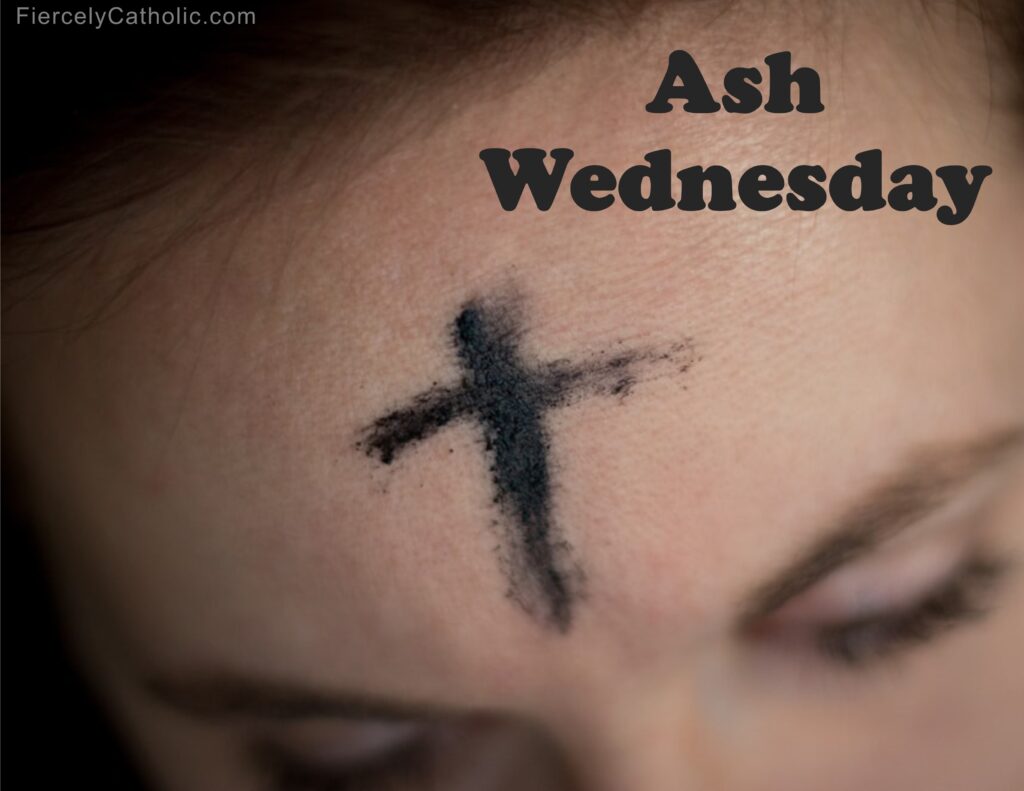
Ash Wednesday is the first day of Lent. On that day, Catholics are marked with ashes on their foreheads in the form of the Cross as a public proclamation of their need for a savior.
Symbolizing the dust that man was created from and will return to, ashes serve as a reminder of man’s mortality and his need to repent from sin. The ashes also call to mind God’s mercy and point toward the Resurrection.
As the priest traces the cross on each person’s forehead with ashes, he says, “Remember that you are dust, and to dust you shall return.” He may also say, “Repent and believe in the Gospel.”
The ashes used on Ash Wednesday come from burned and blessed palm from the last Sunday of the previous season of Lent, Palm Sunday.
Ashes should be received during Mass, but since ashes are a sacramental, it is not a requirement to be Catholic to receive ashes.
Though not a Holy Day of Obligation, Ash Wednesday is a day of penitential prayer and fasting. Catholics are obligated to to abstain from eating meat and to fast by eating fewer and smaller meals on that day.
Ash Wednesday marks the beginning of Lent:
The beginning of a special season for Christians:
Ash Wednesday falls on a different date each year:
In the sweat of your face you shall eat bread till you return to the ground, for out of it you were taken; you are dust, and to dust you shall return.
Genesis 2: 19
Only the love of God can sustain dust as a living being:
The somber future and triumphant past of the ashes:
The little action of the imposition of ashes reveals to us the unique riches of its meaning. It is an invitation to spend the Lenten Season as a more conscious and intense immersion in Christ’s Paschal Mystery in his Death and Resurrection, through participation in the Eucharist and in the life of charity, which is born from the Eucharist in which it also finds its fulfilment. With the imposition of ashes we renew our commitment to following Jesus, to letting ourselves be transformed by his Paschal Mystery, to overcoming evil and to doing good, in order to make our former self, linked to sin die and to give birth to our “new nature”, transformed by God’s grace.
Pope Benedict XVI, General Audience, 17 February 2010
Ashes represent mourning and repentance throughout the Bible:
We are marked with ashes in the shape of the Cross:
Death is the end of earthly life. Our lives are measured by time, in the course of which we change, grow old and, as with all living beings on earth, death seems like the normal end of life. That aspect of death lends urgency to our lives: remembering our mortality helps us realize that we have only a limited time in which to bring our lives to fulfillment: Remember also your Creator in the days of your youth, . . . before the dust returns to the earth as it was, and the spirit returns to God who gave it.
Catechism of the Catholic Church 1007
Ash Wednesday sets the stage for what comes next:
Ash Wednesday confronts the fear of death:
The Truth, Goodness, and Beauty of the Catholic Church
Not living for this world:
Share this page with friends and family to start a conversation about your faith.
Don’t miss a post. Learn more about the Catholic Church and strengthen your Catholic faith.
Find more Fiercely Catholic video issues here.
Subscribe here.


